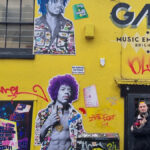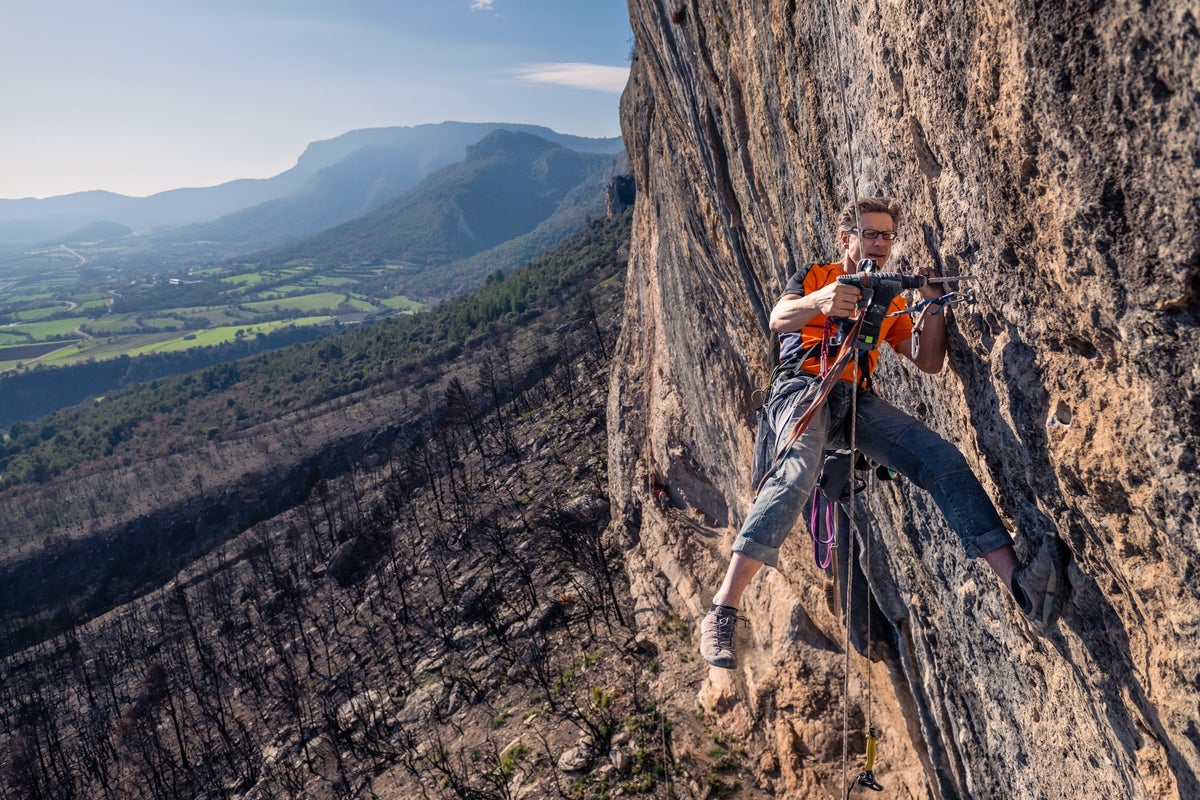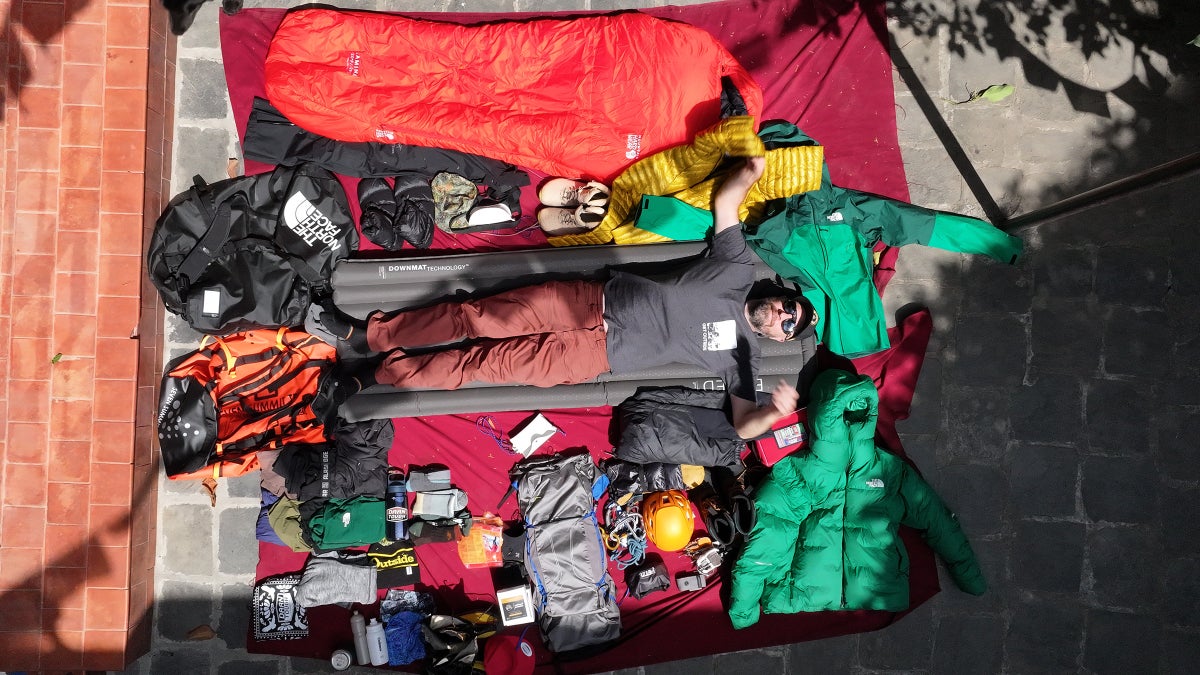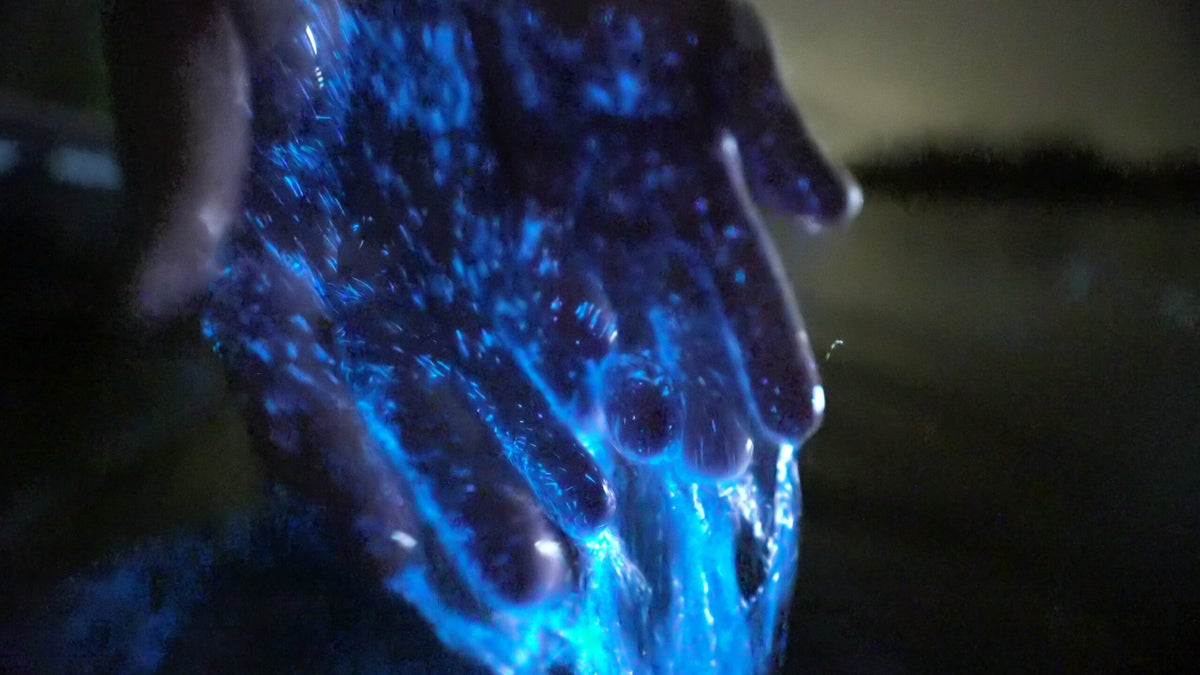
If chasing auroras lights you up, nature has an even wilder spectacle waiting for you.
Picture dipping your kayak paddle into inky black water, only to watch the waves ignite neon blue. Every stroke sets off an underwater light show, as if you’re slicing through liquid starlight. Fish dart below, leaving glowing trails like comets. A manatee glides silently by, its entire body haloed in shimmer. Even the splash from your hand glows, a sparkling echo of your own movement. The surreal beauty transports you into a dreamscape where the stars have fallen into the sea, and you’re swimming through them.
Welcome to bioluminescence—nature’s mind-blowing ability to create its own light, which is is taking noctourism from the heavens down to earth.
“You interact with it,” says Dr. Edith Widder, a marine biologist who has dedicated her career to bioluminescence, and author of Below the Edge of Darkness: A Memoir of Exploring Light and Life in the Deep Sea. “You’re splashing, and the animals around you are making contrails as they swim through the luminescence.”
Now, why would a creature need to glow? We normally think of animals wanting to hide at night, the dark a safety cloak.
The answer begins in the deep sea, a world with little to no sunlight. Here, survival demands innovation. Bioluminescence emerged as a vital form of communication in this vast, dark environment—one that covers most of the planet.
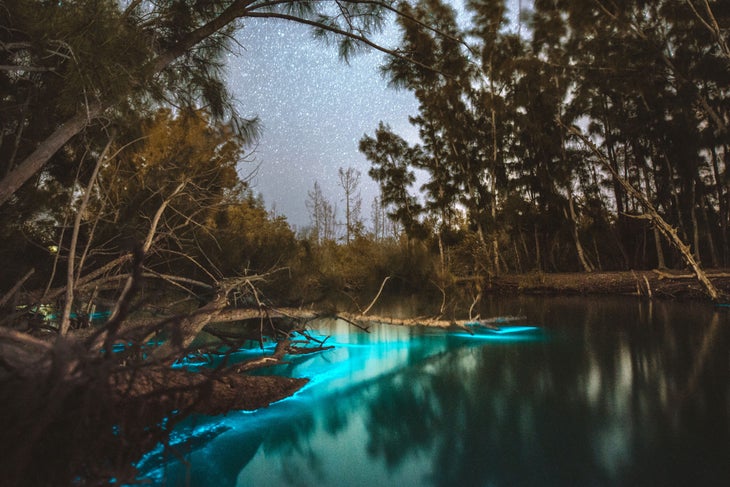
In the open ocean, where there are no rocks or reefs to hide behind, animals adapted by diving into deeper waters during the day and rising to the surface at night to feed. This daily vertical migration left them in near-total darkness, creating evolutionary pressure to develop new ways to communicate and be seen. Self-sourced light became an incredibly common tool.
“In the open ocean environment, approximately 75 percent of the animals make light,” says Widder.
And bioluminescence didn’t just evolve once. It evolved again and again: At least 50 separate times in evolutionary history. That’s how essential it is. Some animals release glowing clouds to distract or confuse predators. Others emit light from their bellies to blend into the faint light filtering down from above. Certain species flash patterns as a warning signal, while others use light like an alarm system, drawing in larger predators to interrupt an attack. In the deep sea, visibility can mean the difference between life and death—and bioluminescence is how many species stay one step ahead.
So what is bioluminescence, exactly, and how does it work? “It’s a type of chemiluminescence,” explains Widder. “It’s a chemical reaction like when you break a light stick… where the chemicals are made by the animals themselves.”
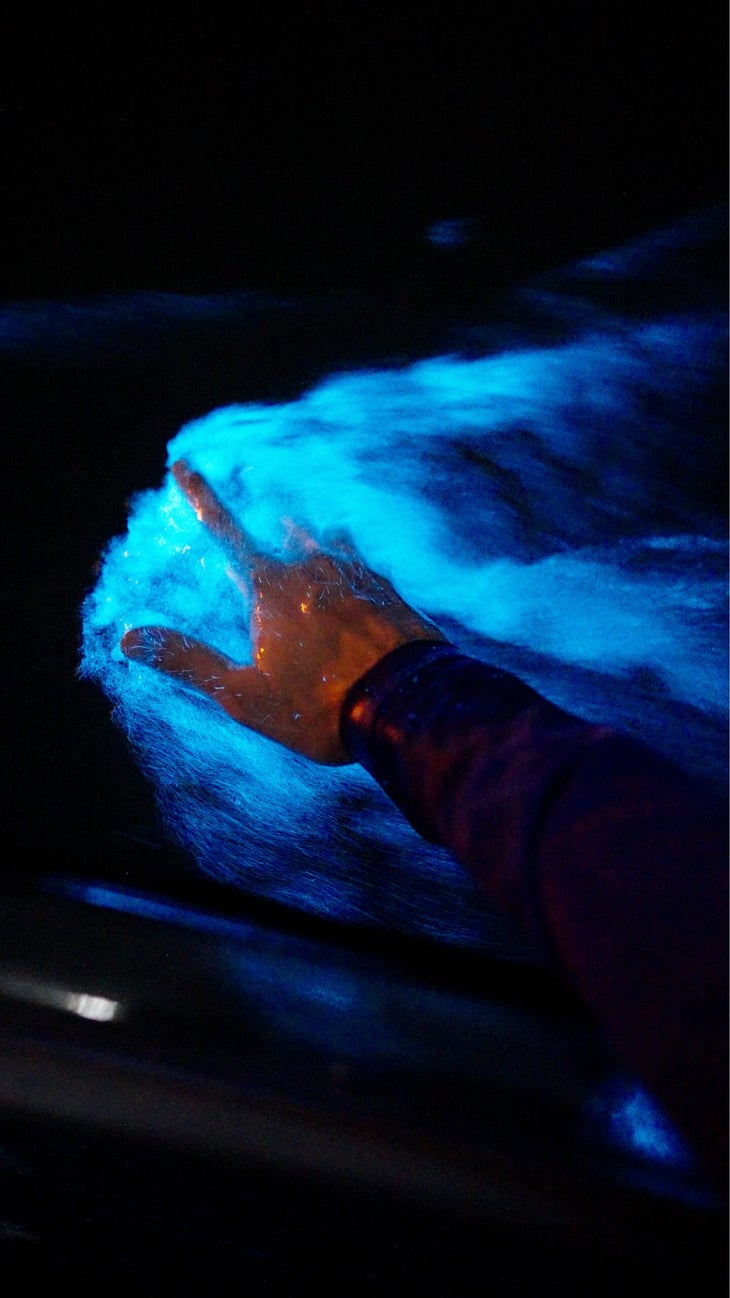
On land, the phenomenon is much less common. While fireflies and glowworms are familiar examples, they’re rare exceptions. Most terrestrial environments offer plenty of places to hide, so there was little evolutionary need for animals to develop the ability to glow.
Still, many breathtaking displays happen right at the surface, especially in bays and lagoons where plumes of bioluminescent plankton (dinoflagellates) gather by the millions. These tiny organisms flash when disturbed—and that’s when the magic happens. Waves glow. Fish leave glowing trails. Kayakers paddle through sparks.
Want to see it for yourself? Whether you’re drifting through a glowing bay or hiking through firefly-lit forests, these nine bioluminescent tours offer front-row seats to the most electrifying show on Earth.
As Widder puts it: “It’s life being manifest in light itself. A living fireworks display—and you’re part of it.”
U.S.
1. Indian River Lagoon, Florida
Just outside Cape Canaveral, Florida’s Indian River Lagoon transforms into a glowing playground after dark. From June to October, this biodiverse estuary near Titusville comes alive with bioluminescence. Microscopic dinoflagellates light up the water with every paddle stroke, making it one of the brightest and most magical displays in the world.
“This is the best I’ve ever seen,” says Widdler. “It’s a reserve, and there’s so much animal life in the water that’s lighting up with the luminescence as it swims through it. I’ve seen manatees swim under my boat, all lit up, dolphins cruising along beside me, fish starting every which way. It’s breathtaking… One of the times I was at Merritt Island, the water around me was just boiling with mullets that were jumping—even jumping into my boat—and it was just spectacular.”
Get Up and Go Kayaking offers guided night tours in clear kayaks designed to maximize the experience. The transparent boats give you a front-row seat to the underwater light show. You’ll glide through waters filled with over 100,000 glowing organisms per liter, lighting up the path as marine life swims beside you. For the lux experience, book the VIP Filmed Bioluminescent Experience—one-and-a-half hours longer than the public tour, your experience is filmed on a Sony A7Siii with high-end lenses before being cut together in a private video (from $1,000).
Details: Get Up and Go Kayaking; adults: $99; children: $69
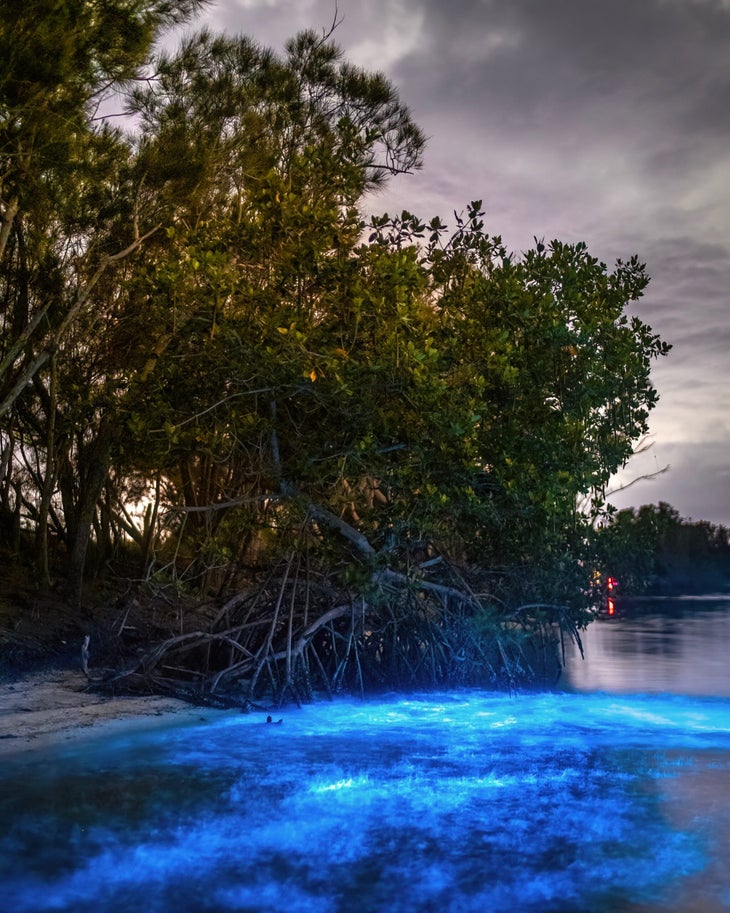
2. Great Smoky Mountains National Park, USA
Each spring, the forests of Great Smoky Mountains National Park light up with one of nature’s rarest displays—synchronous fireflies. For just a few weeks from late May to early June, these tiny insects flash in unison, creating waves of light that ripple across the forest floor. It’s a phenomenon found in only a handful of places worldwide, and Elkmont is one of the best spots to see it.
To fully experience the magic, Blue Ridge Hiking Company offers a Firefly Backpacking Trip. This two-day guided group hike blends hiking, waterfalls, and wildflowers with the chance to witness the fireflies at their peak. The trip is beginner-friendly and open to families, making it a memorable option for all ages. Private tours are available for individuals and groups of up to five. While the trip is planned during peak firefly season, sightings cannot be guaranteed—but the hike, scenery, and serene atmosphere of a national park after dark offer plenty of rewards of their own.
Details: Blue Ridge Hiking Company; $595/person; private groups from $1,460
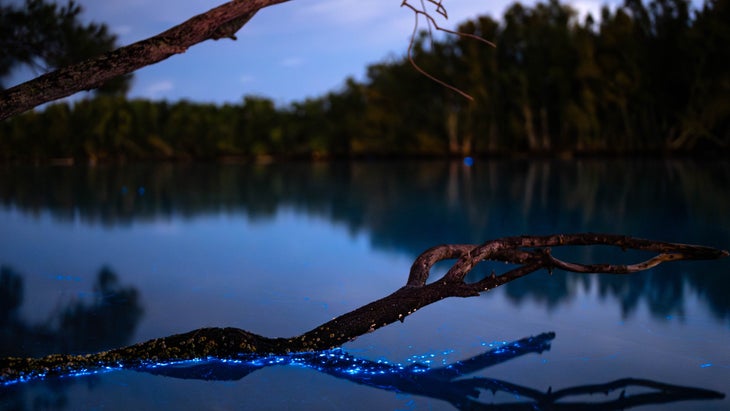
3. Port Gamble Bay, Washington State
Just a short drive from Seattle, Port Gamble Bay in Washington state offers a quiet, stunning setting for one of the Pacific Northwest’s most enchanting night time experiences. Along nearly two miles of untouched shoreline, paddlers can witness the bay waters light up the night.
Olympic Outdoor Center runs a 2-hour bioluminescence kayak tour that’s perfect for all ages and experience levels. The adventure begins with a naturalist talk and kayak lesson before you head out into the calm waters. As your paddle cuts through the dark, the glowing trails left behind feel otherworldly.
Tours typically meet at 9:30 P.M., though times vary with the season. The launch point and return are both at the Port Gamble beach. Wear shoes that can get wet and pack a jacket for the chilly evening air. While the tour runs rain or shine, trips are canceled in the event of heavy wind, rain, or lightning.
Details: Olympic Outdoor Center; adults: $89; youth: $59
4. Mosquito Bay, Vieques, Puerto Rico
Hidden on the island of Vieques, Puerto Rico, Mosquito Bay explodes with light after dark. Known as the brightest bioluminescent bay in the world, this shallow lagoon comes alive each night as millions of dinoflagellates flash electric blue with every ripple, paddle, or splash. It’s like kayaking through liquid starlight. The darker the night, the more the water glows—so check the lunar calendar when booking; peak brilliance is at the new moon.
The ultimate way to experience it? A transparent kayak.
“It’s alien, but not in a scary sense. It doesn’t feel like it belongs on this planet,” says traveler Jacob Berkowitz, who kayaked the bay multiple times between 2022 and 2024 during work trips to Puerto Rico. “You could put your hand in the water and see the effect instantaneously… Even following somebody’s stream, just the flow of the color, it feels like something out of a James Cameron movie, very Avatar-like.”
Taino Aqua Adventures offers guided tours that let you float across glowing waters in two-person kayaks while watching the light swirl beneath you. Tours, which last one hour and 45 minutes, launch between 7:15 and 9:30 P.M. Plan on spending the night on Vieques Island after the tour, as there is no transportation off the island by the time the tour wraps.
Details: Taino Aqua Adventures; $75
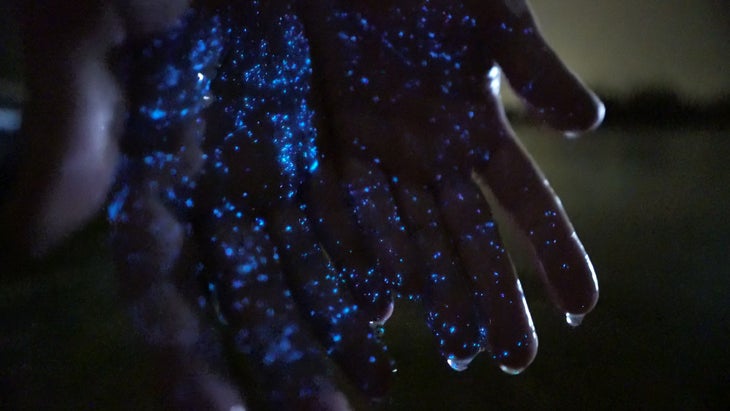
Caribbean
5. Luminous Lagoon, Jamaica
Witness nature’s dazzling light show right from your hotel room patio at Jamaica’s Glistening Waters Hotel. Situated along the famous Luminous Lagoon, this magical location glows brilliantly at night thanks to millions of microscopic dinoflagellates. Watch fish dart and boats glide, each movement sparking electric-blue trails across the water’s surface.
Want a closer look? Join a nightly boat tour at 7 P.M. from the hotel’s restaurant dock. On this 35 to 45 minute adventure, you’ll cruise into glowing waters while your captain shares captivating insights about the lagoon’s bioluminescence and its mineral-rich health benefits. Jump in for a nighttime swim and watch yourself glow with every splash—a truly unforgettable experience.
Details: Glistening Waters Hotel; adults: $25; children 10 and younger: $12.50
6. Bioluminescent Bay, Grand Cayman, Cayman Islands
Tucked away on the north side of Grand Cayman, a hidden lagoon bursts to life after sunset. With a high concentration of bioluminescent organisms, the bay glows electric blue when disturbed—each wave, splash, or paddle lighting up the dark water in a surreal display.
“We kayaked through these dark waters until we got to a secluded part of the bay, and the water began to light up with the most diaphanous neon fireworks,” says Melissa Hobson, owner of the Ocean Writer, who visited the bay while in Grand Cayman for her brother’s wedding. “It was absolutely incandescent. It would sparkle as you hit it so we had a fantastic time reenacting Elsa from Frozen or Star Wars.”
Sweet Spot Watersports offers one of the island’s most popular ways to experience this phenomenon. Their 2-hour bioluminescence tour includes two stops: a visit to Starfish Point and an extended stay in the glowing Bio Bay. Guides explain the science behind the spectacle, including a briefing on upside-down jellyfish that thrive in the area. Guests can swim in the bioluminescent water for a fully immersive experience. Departures vary based on conditions and are confirmed at booking, leaving from either Capt. Marvin’s Dock or Kaibo.
Details: Sweet Spot Watersports; ages 12+: $89; ages 3-11: $69
Oceana
7. Waitomo Caves, New Zealand
If you’re looking to add a shot of adrenaline to your bioluminescent bucket list, the Black Water Rafting tour in New Zealand’s Waitomo Caves delivers. This three-hour underground adventure takes you floating, climbing, and leaping through the glowworm-filled Ruakuri Cave. It’s equal parts thrill ride and light show.
After check-in, you’ll gear up and test your black-water tubing skills before slipping into an underground river. Expect to jump off small waterfalls, navigate through rocky caverns, and drift beneath thousands of brilliant glowworms lighting up the cave ceiling like a night sky. After the tour, warm up with a hot shower and recharge at the on-site café at The Base.
Tours depart daily (except Christmas) and must be booked in advance. Bring swimwear, a towel, and a sense of adventure. The base is cashless, so bring a contactless payment method for the café and gift shop. No caving experience is needed, but you’ll need moderate fitness and a minimum weight of 100 pounds.
Details: Black Water Rafting tour; adults:$188 NZD; youth 12-15: $145 NZD; families: $557 NZD
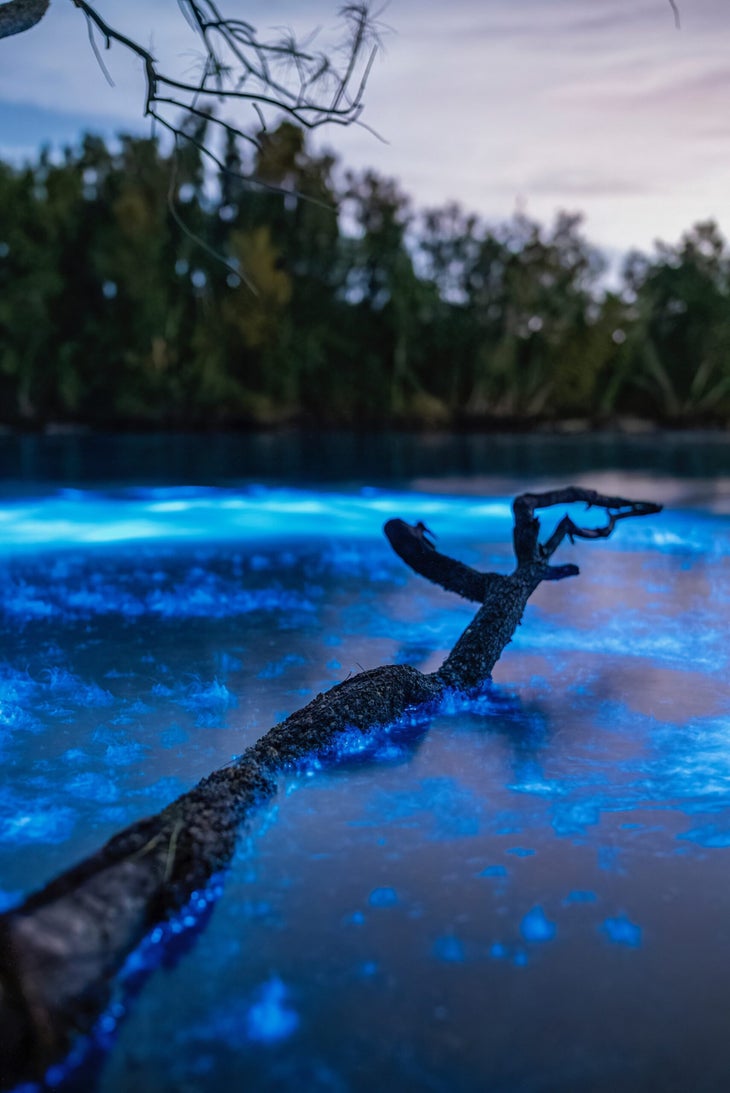
Asia
8. Lan Ha Bay, Vietnam
Discover the magical bioluminescence of Lan Ha Bay, Vietnam year-round with Cat Ba Duky’s night kayaking tour. The light-up plankton are most visible at sunset, so this unique 5.5-hour adventure starts with a sunset cruise (setting sail at 5 P.M.) during which you can enjoy stunning views of limestone karsts. A traditional Vietnamese dinner is served onboard or at a floating fish farm, followed by the opportunity to swim or kayak through the glowing water. Private tours can be requested via email.
Details: Cat Ba Duky’s night kayaking tour; $43 to $90 depending on the location of your hotel pickup.
9. Toyama Bay, Japan
Experience the ethereal magic of bioluminescence with an unforgettable early morning boat tour at Toyama Bay, Japan. Here, the dark waters of the Sea of Japan transform into an enchanting blue universe, thanks to the firefly squids. These tiny creatures generate light from three different body parts: their ventral surfaces, lower margins of each eye, and tips of each of the fourth pair of arms. The innumerable cephalopods illuminate the ocean, creating a spectacle of sparkling light that captivates and delights.
The Hotaruika Museum runs a unique early morning boat tour in Toyama Bay—you depart at 2:30 A.M. and watch as local fishermen harvest the squids. Wind conditions can cause the tours to be cancelled or cut short—but when conditions pan out, you’ll witness these radiant creatures light up the dark ocean with bursts of blue, a rare spectacle available only from April to early May.
Details: Hotaruika Museum; adults: $53 USD; elementary and middle schoolers:$26.50 USD; younger children not permitted
Life was never the same after getting dive certified in the 54°F waters of a flooded Ohio quarry. Local diving led Alexandra Gillespie to a globetrotting stint taking dozens of dives in cool places and writing about them afterward. Now a freelancer for Outside, she covers water and travel. Her writing has also appeared in NPR, National Geographic, Scuba Diving, and other national outlets.
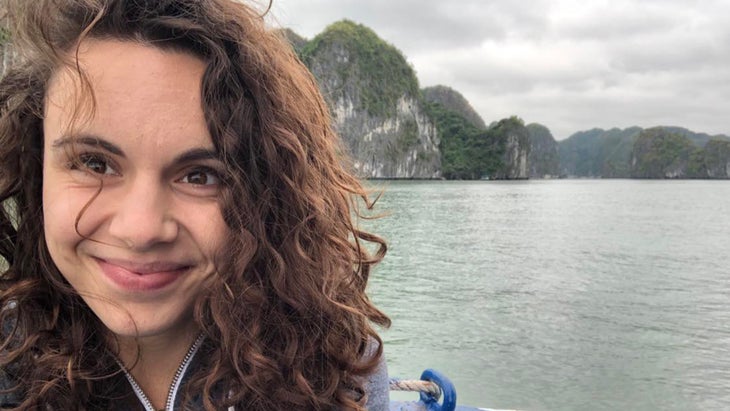
The post The 9 Best Bioluminescence Tours in the World appeared first on Outside Online.

